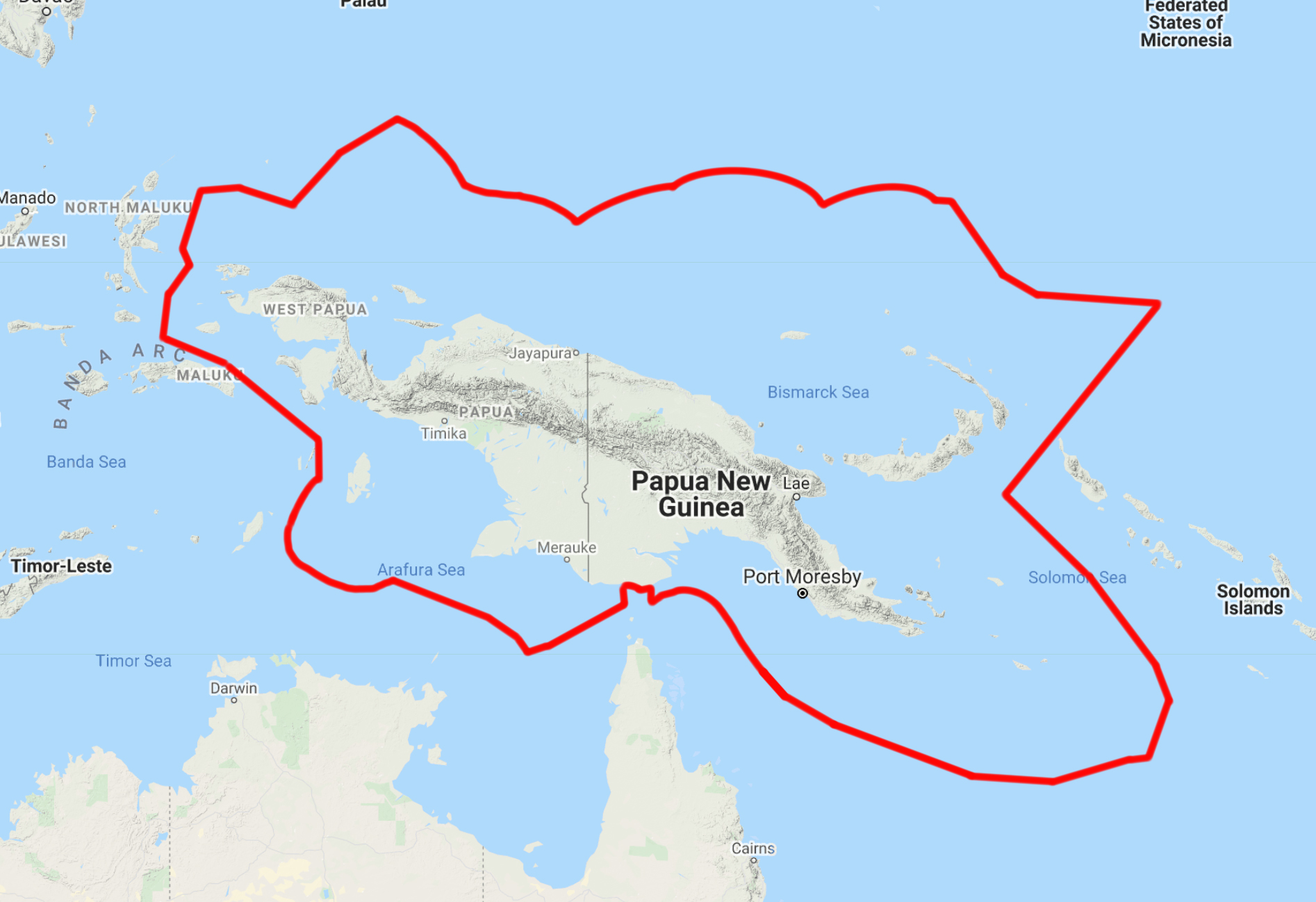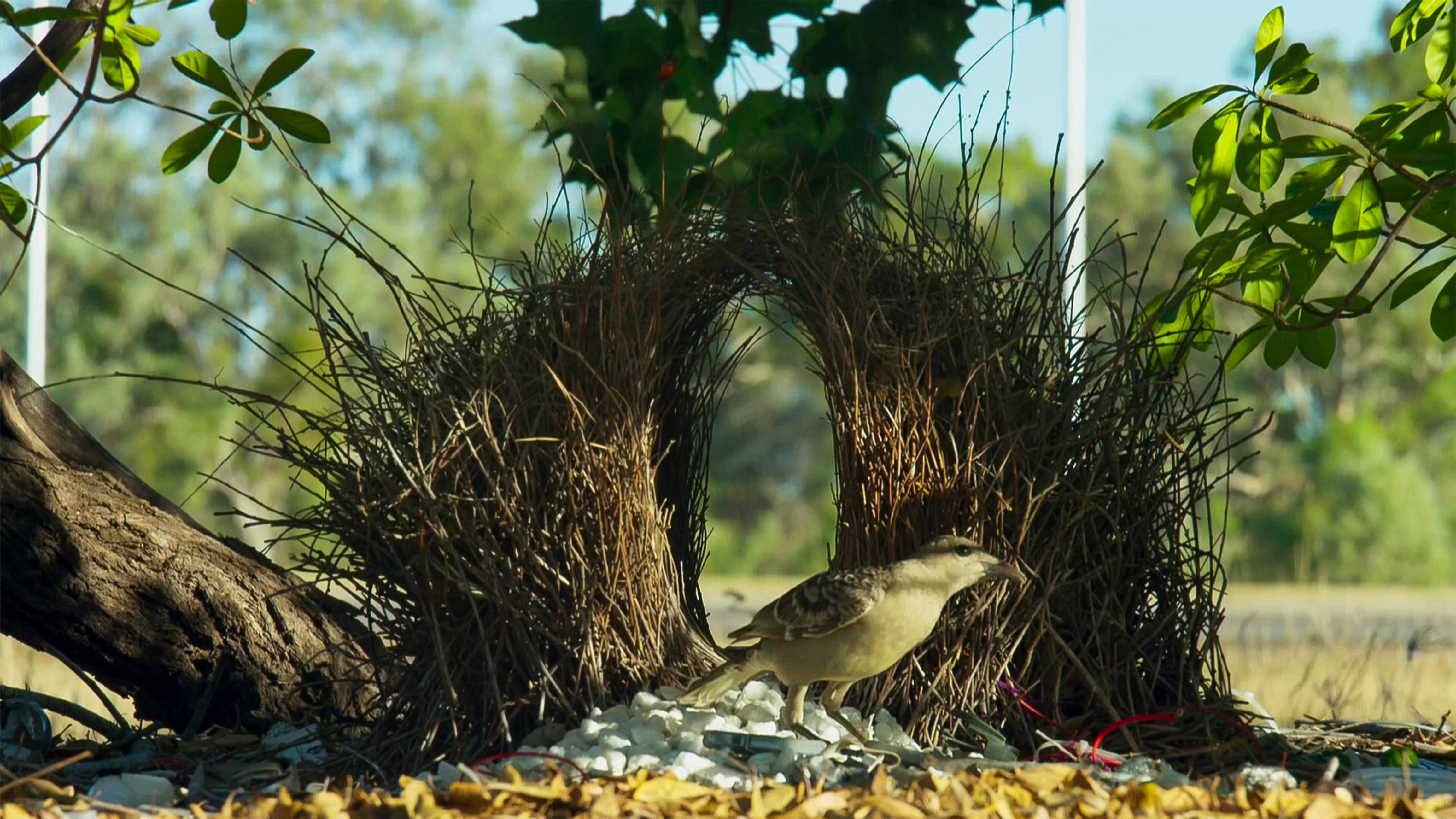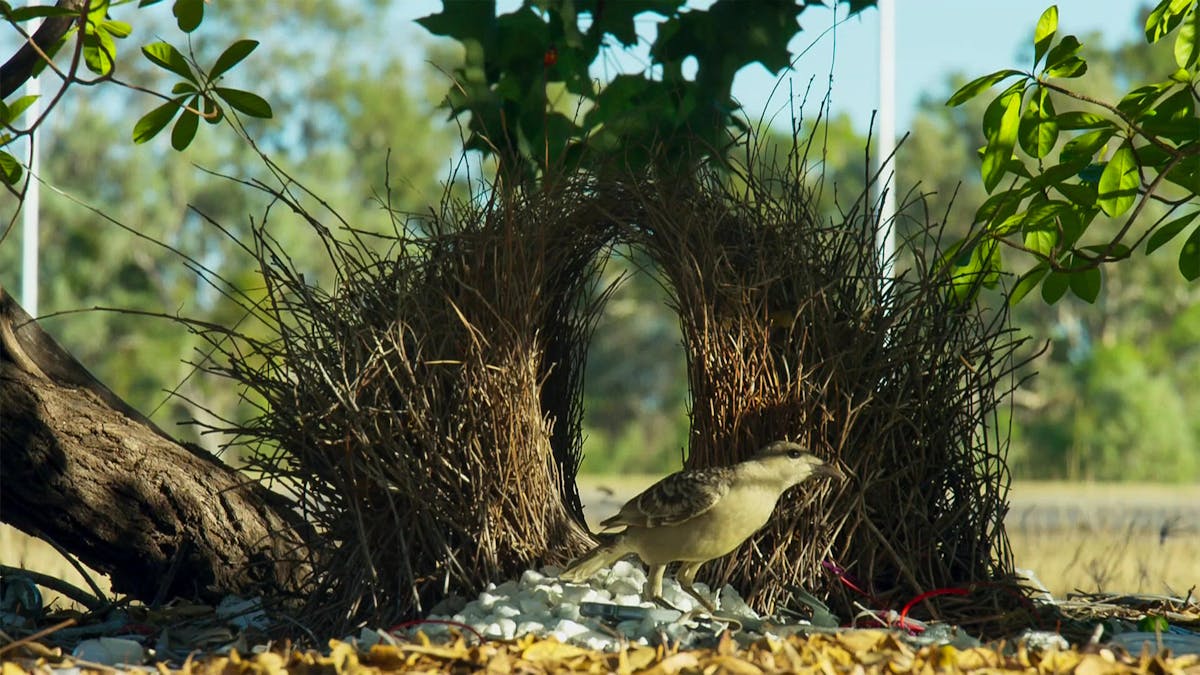Bowerbirds: the amazing animal architects of tropical New Guinea
Our “Species of the Week” series highlights the flagship species of each of the 844 unique ecoregions contained within Earth’s bioregions.
Deep into the tropical rainforest on the island of New Guinea, rather than having cameras pointed up to the flourishing treetops, bird watchers and ornithologists alike scope the jungle ground. Every so often the thin, brown twigs snapping under their feet are formed into what can only be described as little huts or bowers. The bowerbird is near and ready to mate.

Fire-maned bowerbirds are the flagship species of the Northern New Guinea Montane Rainforests ecoregion, located in the New Guinea & Surrounding Islands bioregion (AU13).
Native to the Austro-Papuan region, there are 20 known species of bowerbirds. Eight species are endemic to Australia, ten to New Guinea, and two species are found in both regions. The largest, Archbold's bowerbird, measures 15 inches long and the smallest, the Streaked bowerbird, comes in at 9 inches in length. Their plumage varies drastically from species to species with colors ranging from green, orange, red, yellow, black, and white to olive-brown or gray. Female bowerbirds are less flamboyantly feathered with more neutral shading compared to their males counterparts. Bowerbirds live in a variety of different habitats including rainforests, shrublands, mangroves, and savanna woodlands. Although these destinations can be challenging to reach, bowerbirds have captivated human audiences for their unique mating ritual.

Bowerbird nest
First, the male bowerbird must set the stage. Collecting twigs that litter the forest floor, males construct a bower. With two outer walls curving in, these structures can reach up to six feet in width and up to three feet high. Hours are spent framing and even more time is spent decorating. Small objects like shells, leaves, flowers, feathers, stones, berries, and even discarded plastic items are sought out by the males to adorn their bower. Once a colorful arrangement is bright enough to attract a female, the performance can begin.
Perched into the middle of the alcove made for her, the female watches. Outside the bower, the male begins the dance with his eyes. His pupils dilate back and forth alternatively. This can especially be seen in the Orange flame bowerbird as their black pupils grow large and then suddenly disappear against their bright yellow irises. Next, comes the vocals which are not your average chirp, they are guttural and a bit wheezy. Finally, he flaps his wings in a dance. One wing remains in place as the other swoops and ruffles. Research suggests the male adjusts his performance based on response from the female. If this showing is a success, they will mate and likely again in the future. A failed attempt, and the male bowerbird will redecorate and perhaps even steal items from another more prosperous bowerbird.
In addition to their courtship customs, zoologists are often intrigued by the vocalizations of the bowerbirds which can mimic the call of other bird species, sounds from their environment, and sometimes even human-made noises. Bowerbirds also have the longest life expectancy of any bird in the passerine family, or those with feet evolved for perching. They have an average life expectancy of ten years and one Satin bowerbird documented by the Australian government has been alive for twenty-six years. Fire-maned bowerbirds are the flagship species of the Northern New Guinea Montane Rainforests ecoregion, located in the New Guinea & Surrounding Islands bioregion (AU13).


